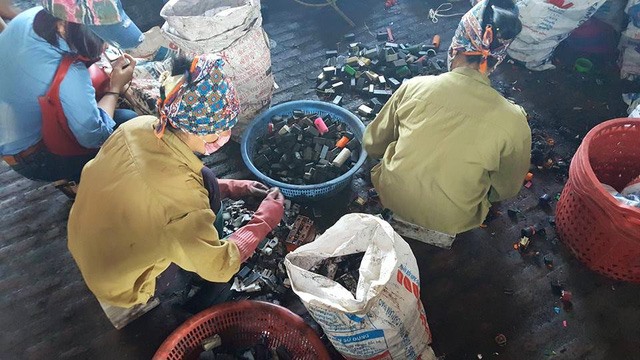 Society
Society

The National Institute of Occupational and Environmental Health under the Health Ministry has conducted a health examination on Vietnamese people who are highly exposed to lead.
 |
| Accumulator recycling at craft villages poses high risk of lead poisoning. — Photo dantri.com.vn |
HÀ NỘI — The National Institute of Occupational and Environmental Health under the Health Ministry has conducted a health examination on Vietnamese people who are highly exposed to lead.
The purpose of the examination is to help them reduce the risk of lead contamination and poisoning.
This month the institute took blood samples of 60 children in Phú Xá Ward in northern Thái Nguyên City of Thái Nguyên Province to determine the level of lead.
Last month children with exposure to lead in Đồng Hỷ District in Thái Nguyên Province and Chợ Đồn District in northern Bắc Kạn Province also underwent testing.
It is part of a research being conducted by the institute on lead poisoning of Vietnamese children. The research focuses on assessing environment situation, its impact on children’s health and mapping out measures.
The research was conducted in localities which have mine ores, metallurgy, recycling and make lead-containing waste, such as Hưng Yên, Thái Nguyên and Bắc Kạn provinces.
Following testing results, the institute will instruct locals to take intervening and preventive measures against lead poisoning.
The institute has also worked with local medical facilities to disseminate knowledge to raise local awareness on culprits and the impacts of lead on health.
According to a representative of the National Institute of Occupational and Environmental Health, sources of lead pollution originate from mining, metallurgy, recycling and the use of lead in paint and petrol.
Children are the most vulnerable to lead poisoning, which may result in serious and long-term consequences, especially the impact on the development of a child’s brain and nerve system. Lead also poses a threat to adults, such as the risk of high blood pressure and kidney failure.
Dr Doãn Ngọc Hải, head of the National Institute of Occupational and Environmental Health, said the release of lead can be done but is unsustainable. Following the release, children return to live in the lead-polluted environment and are exposed to lead again.
She advised residents not to be lured by economic benefits and ignore their health, in addition to suggesting planning of lead recycling villages.
The Natural Resources and Environment Ministry’s latest nationwide survey of 52 handicraft villages has revealed that 46 per cent of them are severely polluting the area’s air, water and land, as well as causing noise pollution.
The survey also shows that people who live in or near such craft villages are at higher risk of suffering from respiratory problems, cancer and mental ailments. — VNS